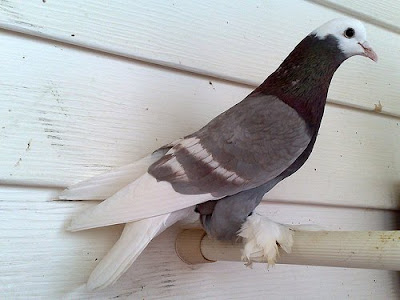Carrier
pigeons return home after long flights. Time for training pigeon is
usually kept less because carrier pigeon take less time to train.
Carrier pigeons were used as a communication method in World War i and
ii for messaging purpose were the message was taped to their leg and was
sent to the required destination. Some people even train carrier
pigeons for racing. No matter what your purpose is but with repetition
and patience you can train a carrier pigeon in a short period of time.
Instructions
- In order to train a carrier pigeon we should start the training with young birds that have not flown yet. Place them into a closed area everyday which is called a fly pen. Place food and water in the loft so they can associate going into the loft with being fed. Do this only for two weeks.
- Open the fly pen and let the pigeons out. Don’t get frightened if they fly around. Some may also go for the ground. After few days they will get used up and start to return to the loft to eat.
- Begin training when the pigeons leave for an hour before returning to their loft. Then take the pigeons out for five to 10 miles.
- Practice by letting the birds to return. When they have done correctly three times then double the distance and repeat. Work until you reach up to 50 miles.
- Continue training the process once a week, even after the birds are regularly returning home. In the winter try to avoid practice during cloudy season. Try to change the directions when releasing them. This is done in order to get them used up from all directions i.e. north, south, east and west. Start at five miles from the loft, then go on increasing distance each time you change direction.
- Release the young birds every time when you feed them because young pigeons need lot of food during training.
Tips & Warnings
It
is better to release the pigeons in the morning then in afternoon to
train them. Fly them only on clear and sunny days when there is little
or no wind. If there are losses slow down the training. Do not over
train the carrier pigeons. Most pigeons find their way home from 50
miles but in exceptional cases from 200 miles. Starting days will be
hardest so be patient. Never ever scare the pigeons when they are in
loft. They feel safe and always wanted to stay with each other.
Old Dutch Capuchine Pigeon

King Pigeon

Indian Fantail Pigeon

Frill Back Pigeon

American Giant Homer Pigeon












